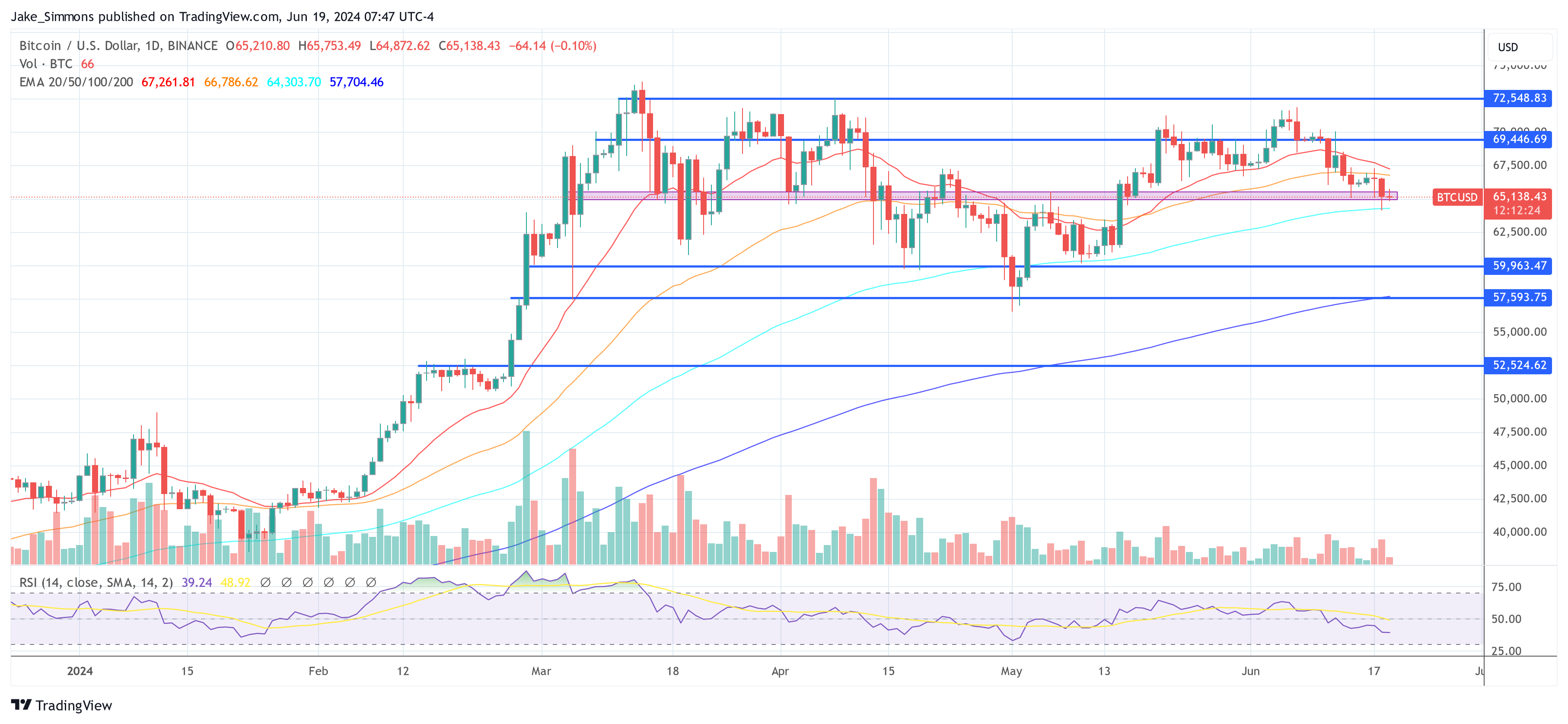Travis Kling, Founder and Chief Investment Officer of Ikigai Asset Management, shared his insights on the current state of Bitcoin and the broader cryptocurrency ecosystem, which he described as follows: “Bitcoin is ~10% off ATHs and the timeline appears to be to walk. the edge of cannibalism.” In a series of detailed to inform On X, Kling dissected the complex interplay of macroeconomic factors, ETF flows, and internal market dynamics that shape cryptocurrency markets.
Why is Bitcoin Trading Flat?
Kling began his analysis by examining Bitcoin’s performance in relation to the broader macroeconomic environment. Despite the NASDAQ rising 16% since April 19, after bottoming due to market unrest over rate cuts, Bitcoin has noticeably underperformed and remained relatively flat. Kling noted: “BTC is trading pretty crappy compared to macro.” This underperformance is particularly striking considering that US stock markets have repeatedly set new all-time highs during this period, while Bitcoin has stagnated.
Related reading
A significant portion of Kling’s analysis focused on the dynamics of US spot Bitcoin ETFs. As of May 13, the market witnessed 19 consecutive days of robust ETF inflows, totaling approximately $4 billion. Surprisingly, these substantial inflows only resulted in a 17% increase in Bitcoin’s price, which Kling says is disappointing. He noted: “It is true that BTC was +17% during this period, but why not more? Why not meaningfully higher highs?”
This question points to underlying problems in market structure or investor sentiment that could dampen the expected bullish response to peaks in inflows. Furthermore, the recent outflow from ETFs coincided with a 7% decline in the price of Bitcoin over a similar period, further complicating the story surrounding ETFs’ impact.
Kling suggests that while ETF inflows and outflows are significant, they may not fully reflect underlying market dynamics, suggesting a complex interplay of arbitrage opportunities and market sentiment. “I think we can say with confidence that the ETFs have a lot of arb flow in them. Just look at the 13Fs. There is NAV arb and then that gets transferred to futures and spot, and then there is the same basic trading that has always been present in this market,” Kling wrote.
He also speculated about external factors affecting the price of Bitcoin, such as the possible sale of Bitcoin by the government that was seized during the Silk Road operation. While he admits there is no concrete evidence, Kling tailors his hypothesis to the timing of certain market movements and known government actions. Additionally, he highlighted Ethereum’s influence on Bitcoin market dynamics, especially during a week of significant activity around an Ethereum ETF, which recorded the largest weekly ETH to BTC volume ever since a previous peak.
What can you expect from ether and altcoins?
Despite Ethereum’s influence on Bitcoin, ETH itself faces challenges. The anticipation surrounding spot Ethereum ETFs has not translated into sustained positive price action. Ethereum remains 30% below its all-time high, with emerging ETFs potentially a crucial factor. Kling states: ‘If [Ethereum ETF inflows] strong, ETH will likely tear hard. If they are weak, ETH could sell out.” The uncertainty about the strength of these inflows and their impact on the market reflects broader market concerns.
Related reading
The broader altcoin market is also suffering, with many tokens having fallen significantly from their peaks and struggling to find a footing. Kling’s comments on the altcoin sector are particularly stark: “The airdrop meta has been dying a slow death for months. Alts are overwhelmed by token unlocks from holders that are many multiples higher and will make a non-existent bid.” This scenario illustrates the difficulties smaller altcoins face as they navigate a market dominated by big players like Bitcoin and Ethereum.
In conclusion, Kling’s comprehensive analysis suggests a cryptocurrency market is at a critical juncture, facing internal competition and macroeconomic mismatches that could determine its trajectory in the coming months.
“So overall what the timeline does is that prices are 75% lower than they are now. BTC is likely to go higher this year. ETH is likely somewhere between fines and gangbusters this year, based on ETH ETF inflows. But the gap between BTC/ETH and everything else is wide and will likely widen this year. If crypto can muster even the slightest bit of a legitimate story that can spark a real influx into Alts, it could all change quickly. But the current crop of ‘stories’ is unlikely to do that,” Kling concluded.
At the time of writing, BTC was trading at $65,138.

Featured image from YouTube / What Bitcoin Did, chart from TradingView.com













